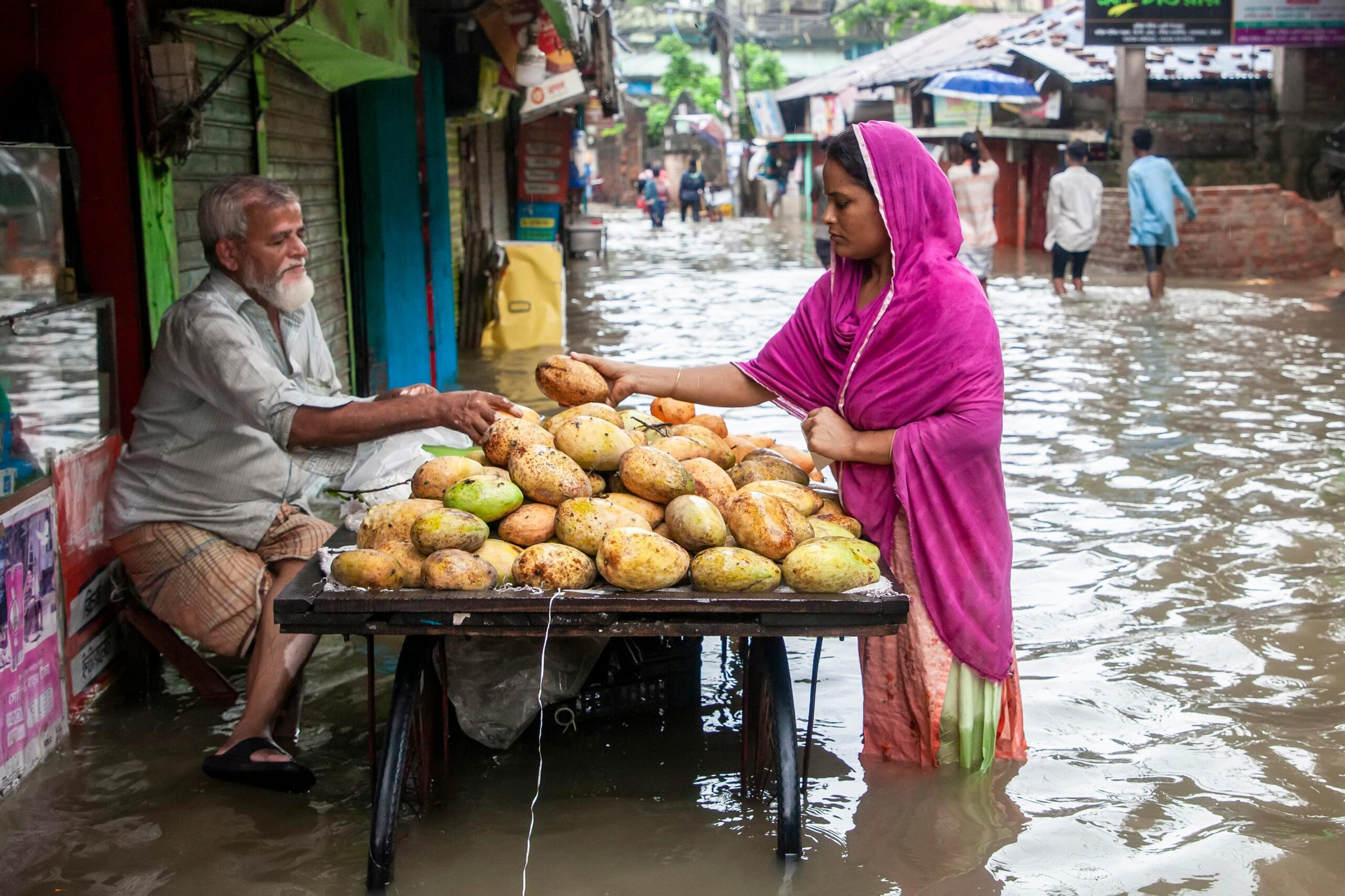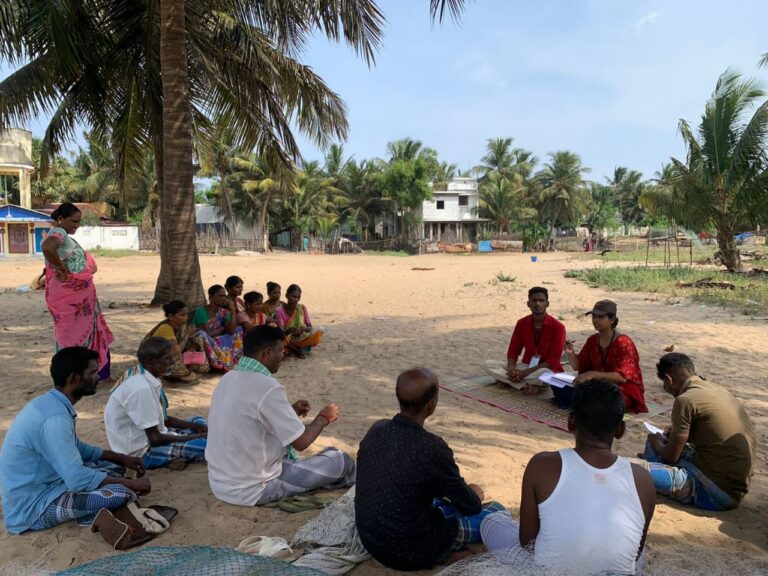Floods are a brutal reminder of nature’s force, affecting millions and leaving devastation in their wake. As of August 2024, both India and Bangladesh have been hit hard, with relentless rains causing rivers to overflow, leading to deadly floods. In Tripura, India, and parts of eastern Bangladesh, over 36 lives have been lost, and nearly 4.5 million people affected by floodwaters, with communities cut off, homes submerged, and entire livelihoods swept away.
But amid the numbers, it’s crucial to focus on the broader conversation: Water Security. This disaster teaches us important lessons about sustainable water security, with particular attention to vulnerable populations—especially children.
The Reality of Floods in South Asia
Flooding is not new to Bangladesh and northeastern India. This region is prone to monsoon floods, but with climate change exacerbating the situation, extreme weather events like this one are becoming more frequent and deadlier. The human-caused climate crisis has intensified rainfall, pushed river levels to new extremes, and caused mass displacement. As of August 2024, in Tripura alone, over 64,000 people are sheltering in relief camps, while eastern Bangladesh has seen homes swept away, leaving families stranded on rooftops, awaiting rescue.
However, beyond the immediate effects, floods bring long-term consequences, particularly for children who suffer disproportionately in disaster scenarios.
The Impact of Floods on Children: Insights from UNICEF
While the physical damage caused by floods is evident, the silent crises that follow are often overlooked. UNICEF has highlighted several ways floods uniquely impact children. It’s important to recognize these issues because water management and security aren’t just about controlling rivers and building dams—they’re about protecting the most vulnerable.
1. Health Risks
Floodwaters carry dangerous pathogens, contaminating drinking water sources and spreading diseases like cholera, typhoid, and diarrhea. Stagnant water also serves as a breeding ground for malaria-carrying mosquitoes. For children, who are more susceptible to infections and malnutrition, these diseases can be life-threatening. Moreover, the destruction of health facilities means children miss out on essential vaccines and health services, leading to long-term public health challenges.
How can we manage this better? We need proactive water management systems in place to ensure clean drinking water, even during crises. Community awareness and preparation around water purification methods can go a long way.
2. Nutrition Challenges
Floods often catch families by surprise, leaving them with little time to gather food supplies. As a result, children, particularly those from poorer households, experience food shortages, worsening malnutrition and stunting. The destruction of crops and local markets compounds this problem, making it difficult for communities to recover quickly.
Food security needs to be a cornerstone of water management discussions. Innovative farming practices and flood-resistant crop varieties are part of the solution, ensuring that people remain fed even in the worst of times.
3. Educational Disruption
Floodwaters can destroy schools, textbooks, and roads, depriving children of the chance to learn. Prolonged gaps in education are particularly harmful, especially for girls, who face a higher risk of dropping out and being coerced into early marriage.
Incorporating education continuity plans into water security strategies—such as establishing temporary learning centers or digital classrooms—can help ensure children continue their education even in the aftermath of disasters.
4. Safety Concerns
Children displaced by floods are often forced to live in temporary shelters or relief camps. In these unregulated environments, they face increased risks of abuse, child labor, and human trafficking. Girls, in particular, are vulnerable to exploitation.
We must look at water management from a holistic security lens. Proper planning for safe shelters and community support can protect children from these risks, giving them the safety they need during times of displacement.
Preparing for Floods: What You Can Do
It’s not enough to react to floods; preparation is key to saving lives. Here’s what you can do to protect yourself and your family:
1. Create a Go Bag: Have a ready-to-go emergency bag with essentials like food, water, medicines, important documents, and clothes. Teach your children where it is and how to use it.
2. Monitor Weather Forecasts: Stay updated through TV, radio, or mobile alerts. Knowledge is power, and timely information can help you take the necessary steps before it’s too late.
3. Know Your Evacuation Plan: Make sure you know the nearest safe assembly points and evacuation routes. If authorities ask you to evacuate, do so promptly.
4. Teach Your Children Flood Safety: Prepare your children by talking to them about floods—why they happen and what to do when they occur. Understanding the situation helps reduce fear and keeps them calmer in emergencies.
5. Move to Higher Ground: If floodwaters rise, evacuate immediately and head for higher ground. Avoid walking, swimming, or driving through fast-moving water. Most flood deaths occur due to drowning, and fast-moving water is more dangerous than it looks.
Water Security: The Bigger Picture
Floods and water-related disasters remind us that water security is not just about preventing floods—it’s about managing water resources to ensure safety, health, and prosperity for all. From climate change mitigation to ensuring access to clean drinking water, our future depends on how well we can secure our water resources.
This month, as we move forward with the theme of water security, it’s essential to remember that the human element—particularly the well-being of children—should be at the center of our discussions.
The floods affecting millions today could very well become the norm if we don’t act. Let’s push for sustainable solutions, hold conversations about preparedness, and prioritize the health and safety of the most vulnerable.
Water security is about survival, and with better management, awareness, and preparation, we can turn the tide against future disasters.
References:
UNICEF. (n.d.). Resilience in the face of floods. UNICEF. https://www.unicef.org/rosa/stories/resilience-face-floods
Lai, A. (2024, August 22). Deadly floods devastate parts of Bangladesh and northeastern India. CNN. https://edition.cnn.com/2024/08/22/india/flooding-bangladesh-india-intl-hnk/index.html




